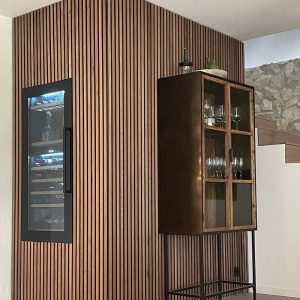travel,games,entertainment,hospitality,vehicles,arts,business,recreation,construction,people,garden,reference,world,financial,computer,government,information,random,outdoors
Choosing the Perfect Wood for Wall Panelling: A Creative GuideChoosing the Perfect Wood for Wall Panelling: A Creative Guide

Choosing the Perfect Wood for Wall Panelling: A Creative Guide
Wall panelling isn’t just a design trend—it’s a timeless way to bring warmth, depth, and character into any space. Whether you’re renovating your living room, adding charm to a hallway, or updating your office walls, wall panelling offers endless potential to elevate your interior. Choosing the right
can dramatically elevate the overall atmosphere of your space.
The secret to pulling off the perfect panelled look? Choosing the right type of wood. From bold and modern to soft and traditional, the wood you select will play a huge role in the look, feel, and longevity of your design.
In this post, we’ll walk you through the most popular wood options for wall panelling, helping you make the best choice for your space, style, and budget.
MDF: The Versatile Canvas for Creative Designs
Medium-Density Fibreboard (MDF) is one of the most commonly used materials for wall panelling—and for good reason. Made from fine wood fibres compressed with resin, MDF is smooth, stable, and super easy to work with. For a more cohesive interior, stick to complementary
throughout your home.
Since it doesn’t have a natural grain, MDF provides a flawless surface for painting and customization. Want to add a pop of color to your space? MDF is the perfect blank canvas for vibrant hues or clean, classic whites. It also works beautifully for creating intricate panel designs like wainscoting, shaker-style grids, or decorative trims.
Moisture-Resistant MDF: For Kitchens & Bathrooms
If you’re planning to add panelling to a high-humidity area like a bathroom or kitchen, opt for moisture-resistant MDF. It’s specially treated to withstand damp conditions, so you won’t have to worry about warping, swelling, or deterioration over time.
Perfect for utility spaces, entryways, or mudrooms—moisture-resistant MDF delivers the same look and ease-of-use as standard MDF, with extra durability where you need it most.
Plywood: Natural Strength and Style
Looking for something with a bit more character? Plywood combines natural beauty with practical strength. Made by layering thin sheets of wood veneer in alternating grain patterns, plywood is incredibly strong and resistant to warping.
What makes plywood special is its visible wood grain, which brings texture and authenticity to your interior. You can stain it for a rich, earthy tone or leave it raw for a more minimalist, Scandinavian look. It’s a great option for those who want the real-wood feel with added resilience.
Wood Veneer Panels: High-End Looks on a Budget
If you love the look of solid wood but want something more affordable, wood veneer panels offer the best of both worlds. These panels feature a thin slice of real wood applied over an engineered core like MDF or plywood, giving you the rich texture and beauty of hardwood—without the high cost. Moisture-prone areas benefit greatly from materials with enhanced
properties.
Wood veneer panels come in a variety of wood species like oak, walnut, and maple. They’re lightweight, easier to install than solid wood, and can be stained or finished to suit your style.
Slatted Wood Panels: Modern and Architectural
Want to make a bold design statement? Slatted wood panels are a sleek, modern way to add texture and rhythm to your space. These panels feature evenly spaced vertical or horizontal wooden slats that create visual depth and a contemporary vibe.
Beyond looks, slatted panels also offer practical benefits. They allow light and air to flow through, making them great for open-concept spaces or decorative room dividers. Whether you want to panel a single accent wall or an entire ceiling, slatted wood brings style and function together effortlessly.
Chipboard & MFC: Budget-Friendly and Functional
If you’re working with a tight budget, Chipboard and Melamine-Faced Chipboard (MFC) are practical alternatives. Chipboard is made from compressed wood chips and resin, while MFC adds a melamine coating that gives it a smooth, finished surface.
While these materials lack the natural grain of real wood, they come in a wide range of finishes and colors. They’re especially useful for commercial spaces, rental properties, or large-scale projects where durability and cost savings are key.
Final Thoughts: Let Your Style Lead the Way
Choosing the right wood for wall panelling is about more than just aesthetics—it’s about finding the perfect balance between beauty, durability, and budget. Whether you’re drawn to the clean, customizable look of MDF, the warm authenticity of plywood, or the modern edge of slatted panels, there’s a material that fits your vision.
Wall panelling is a creative way to tell your style story, one panel at a time. With the right wood in hand, you can turn any wall into a stunning design feature that adds value and personality to your home.



